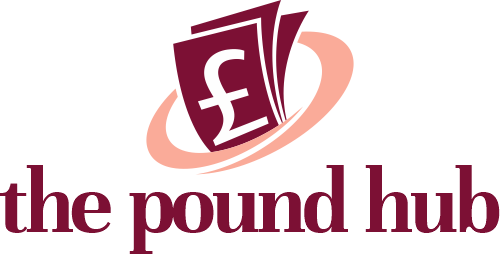Thirty years ago, the Canadian dollar was worth an average of 72.9 cents American. In the coming years, it dropped below 64 cents, but the mid-1990s resonate strongest with a lot of sports fans.
In 1995, the Quebec Nordiques left for Denver to become the Colorado Avalanche. A year later, the Winnipeg Jets flew south to become the Arizona Coyotes. Every Canadian team in the National Hockey League, save for perhaps the Toronto Maple Leafs, seemed to be fighting a financial crisis. (That 64-cent nadir came in 2001, when the Grizzlies left Vancouver for Memphis.)
This week, the Canadian dollar was worth approximately 70 cents in American dollars. And there is no sign of that stopping soon. Worth 74.5 cents back in September, the Canadian dollar has dropped steadily since, with the election of Donald Trump as president and the ensuing threats and application of tariffs resulting in steep, if sometimes brief, drops.
With a federal election taking place in Canada on April 28, there is no short-term hope that the dollar will get stronger imminently.
“Two years ago, you weren’t really thinking about this,” said Rob Tilliss, chief executive officer of Inner Circle Sports, a boutique investment bank that works within the sports and entertainment spheres. The company has worked with several professional sports teams, including the Ottawa Senators and Montreal Canadiens. “Now (as a business executive with a Canadian team) you’re thinking about hedging strategies. You’re thinking about how much of my revenue is contractual season tickets versus day-of-game tickets.
“As the Canadian dollar declines, you have to adjust your budget. They’re all probably reassessing their budgets for the next year or two.”
This might be a particular issue for the Toronto Raptors, the lone Canadian NBA team. Rogers’ purchase of Bell’s shares in Maple Leaf Sports and Entertainment, the group that owns the Raptors, Maple Leafs, Toronto FC, among other teams and facilities, is expected to close in the middle of this year. That deal will give Rogers 75 percent control of MLSE. Rogers also owns the Toronto Blue Jays, although not under the MLSE umbrella.
Rogers is a publicly traded company, and its stock price has fallen from more than $50 in December, to currently being under $40. Raptors president Masai Ujiri has never complained about MLSE’s financial support for the team, but these are unfamiliar, if not unprecedented, times.
“I clearly remember having a U.S. dollar issue. It was something we focussed on,” said Richard Peddie, who was the president and CEO of MLSE (and before that, Maple Leaf Gardens Ltd.) from 1996-2011. “The bottom line was really important to all of us. There was a bonus plan to all of the employees, hundreds of employees, in Maple Leaf Sports in those days — I doubt it exists today — based on how much money we made. We all cared.”

The volatility of the Canadian dollar is causing headaches for Canadian sports teams in U.S. based leagues. (Mark Blinch / Getty Images)
“Clearly more than 50 percent of your expenses can be U.S. dollars and more than 50 percent of your revenue can be Canadian dollars,” added Tom Anselmi, Peddie’s successor as MLSE president and former chief operating officer. He went on to serve as the president and CEO of the Ottawa Senators and president, business and vice-chairman of the Edmonton Oilers. “You’ve got a disparity there versus your American counterparts. You either have to have a market that allows you to price comparatively in Canadian dollars or you’re going to have a delta there and it’s going to make it difficult to be competitive in how you spend.”
The Raptors are already committed to spending a lot on players next year. They owe more than $175 million (U.S. dollars) to the 10 players on guaranteed contracts for 2025-26. That would leave them about $12.5 million to get their roster to the minimum of 14 while staying below the luxury tax — which the Raptors have paid just once in the last 22 years, after the 2018-19 season, when they won the NBA championship.
If the Raptors move up in the draft lottery, it would be functionally impossible for them to retain each of the eight players they have on non-minimum deals (Brandon Ingram, Scottie Barnes, Immanuel Quickley, RJ Barrett, Jakob Poeltl, Ochai Agbaji, Gradey Dick, Ja’Kobe Walter), fill out their roster and stay below the tax threshold. If they stay in their spot or move down, it will still be tight, and they would have to fill out their roster using only minimum contracts to achieve that goal.
There is a basketball case to pay the tax for a season, especially if the Raptors believe they can get below the threshold in 2026-27. However, the economic case is dicier given the state of the dollar. The Raptors’ share of the league’s new 11-year, $76-billion TV deal comes in U.S. dollars, which is helpful. In addition, the Raptors’ share of luxury tax payments that come from tax-paying teams comes in U.S. dollars.
Still, the Raptors pull in plenty of revenue in Canadian dollars. Given the volatility of the dollar and the unpredictability of Trump’s impact on Canada’s relationship with the United States (and the financial repercussions that could have), the Raptors and all Canadian teams will want to lock in as much controlled revenue as possible — season tickets, suite sales and more, Tilliss said. Season ticket renewals went out about a month ago at an average annual increase of two percent, per an MLSE spokesperson. Season-ticket holders have until the end of the month to opt out.
Last year, near the end of a 25-win season, the Raptors had a four-percent raise. This year’s Raptors aren’t going to finish much better.
“I don’t remember (that) a disadvantage with the American dollar ever played a role with ticket prices,” Peddie said. “But (MLSE) expected us to find profit growth every year, so we did look at ticket prices. But, of course, there was a correlation (between winning and ticket prices). You’re not too crazy of doing it, or whether we should do it at all, if your team is underperforming. We were mindful of that.”
One thing Canadian teams, including the Raptors, do to guard against currency unpredictability is hedge against the volatility of the Canadian dollar, most commonly with futures contracts — agreeing to buy a product or currency for a pre-set price on a specific date in the future.
“Sometimes you win on that and sometimes you lose on that, but at least you have price protection,” Anselmi said. “You’ve got certainty and you know what the future holds. Aside from that, it’s really about pain management with the business as much as you can.”
There is good news, or at least news that isn’t necessarily bad. The dollar’s value has been tied to tariff threats. If — a big if, obviously — those threats go away or fade into the background, there is no reason the value of the Canadian dollar couldn’t stabilize or even rise.
Additionally, Frances Donald, a senior vice-president and chief economist at RBC, noted that experiential spending has grown since the pandemic.
“That isn’t something that’s likely to dissipate soon,” Donald said.
Donald noted that right now, faith in the Canadian economy is low, meaning people are less likely to spend on discretionary (non-essential) items. That isn’t guaranteed to continue.
“Businesses need to plan for the downside risks — the things that could go wrong — but they also need to plan for the things that can go right,” Donald said. “Despite all of the challenges that Canada is currently facing, a lot of things can still go right.”
In that way, the Raptors monitoring the volatility of the Canadian dollar seems similar to their fans monitoring them.
(Top photo: Ashley Landis-Pool/Getty Images)







